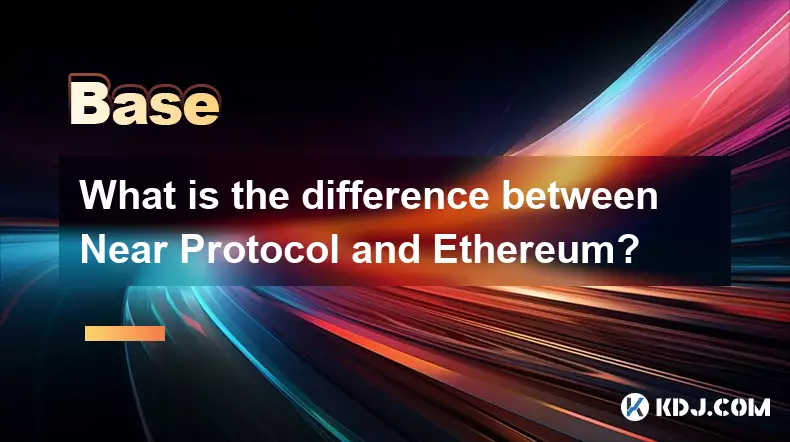-
 bitcoin
bitcoin $110323.126235 USD
1.94% -
 ethereum
ethereum $3864.833023 USD
1.25% -
 tether
tether $1.000393 USD
0.02% -
 bnb
bnb $1133.877748 USD
4.86% -
 xrp
xrp $2.393640 USD
1.11% -
 solana
solana $192.566078 USD
6.48% -
 usd-coin
usd-coin $0.999906 USD
0.00% -
 tron
tron $0.313196 USD
-2.80% -
 dogecoin
dogecoin $0.194944 USD
2.29% -
 cardano
cardano $0.643216 USD
2.65% -
 hyperliquid
hyperliquid $39.990234 USD
7.27% -
 chainlink
chainlink $17.375446 USD
0.89% -
 ethena-usde
ethena-usde $0.999536 USD
0.02% -
 stellar
stellar $0.310716 USD
0.33% -
 bitcoin-cash
bitcoin-cash $480.762464 USD
1.14%
How do decentralized identity (DID) solutions work?
Decentralized identities (DIDs) empower users to control their digital identity via blockchain, enabling secure, private, and interoperable authentication without centralized authorities.
Oct 14, 2025 at 11:36 pm

Understanding Decentralized Identity in the Blockchain Ecosystem
1. Decentralized identity (DID) solutions are built on blockchain networks, allowing individuals to own and control their digital identities without relying on centralized authorities such as governments or corporations. Each user generates a unique identifier that is stored on a distributed ledger, ensuring transparency and immutability.
2. These identifiers are cryptographically secured through public-key infrastructure. A user holds a private key that grants access to their identity data, while the corresponding public key is recorded on the blockchain. This setup enables secure authentication and verification processes across platforms.
3. DID systems often integrate with verifiable credentials—digitally signed statements issued by trusted entities like universities or financial institutions. These credentials can be selectively shared, meaning users disclose only necessary information without exposing their entire profile.
4. Interoperability is a core feature of many DID frameworks. Standards like W3C’s Verifiable Credentials Data Model allow different blockchain networks and applications to recognize and validate identities across ecosystems, increasing usability and adoption.
5. Because DIDs operate independently of any single platform, they reduce the risk of data breaches associated with centralized databases. There is no central honeypot of personal information for attackers to target, enhancing overall security in digital interactions.
The Role of Smart Contracts in Identity Management
1. Smart contracts automate the issuance, storage, and validation of decentralized identities. When a user requests a credential from an issuer—such as proof of citizenship—a smart contract verifies eligibility and issues the credential if conditions are met.
2. These self-executing agreements run on blockchains like Ethereum or Polygon, ensuring tamper-proof execution. They eliminate intermediaries, reducing costs and processing time while maintaining audit trails for compliance purposes.
3. Access control rules can be encoded directly into smart contracts. For example, a decentralized application (dApp) might require proof of age before granting service access. The smart contract checks the user's submitted credential against predefined criteria without revealing additional details.
4. Revocation mechanisms are also managed via smart contracts. If a credential becomes invalid—due to expiration or fraud—the issuer can trigger a revocation event recorded immutably on-chain, preventing further use.
5. Developers can build modular identity layers using composable smart contracts. This flexibility supports complex use cases such as cross-border KYC procedures or dynamic consent management for data sharing.
Privacy-Preserving Techniques in DID Systems
1. Zero-knowledge proofs (ZKPs) enable users to prove possession of certain attributes without disclosing the underlying data. For instance, someone can verify they are over 18 without revealing their exact birthdate. This technique strengthens privacy while maintaining trust in transactions.
2. Selective disclosure allows individuals to share specific parts of their identity. A job applicant might provide proof of degree completion to a recruiter while withholding their residential address or national ID number.
3. On-chain metadata is minimized to protect anonymity. Instead of storing personal data directly on the blockchain, DIDs reference off-chain storage solutions like IPFS or Ceramic, where encrypted information resides under user control.
4. Pseudonymous identifiers replace real-world names in most interactions. Users interact through wallet addresses linked to their DIDs, preserving unlinkability across services unless explicitly authorized.
5. Decentralized identifiers support local key management through non-custodial wallets. This ensures that even service providers cannot seize or manipulate a user’s identity assets.
Integration of DIDs in DeFi and NFT Platforms
1. In decentralized finance (DeFi), DIDs help establish creditworthiness without traditional credit scores. Lenders can assess a borrower’s history based on verified on-chain activities tied to a persistent identity.
2. NFT marketplaces use DIDs to authenticate creators and prevent impersonation. Artists link their verified identity to minted collections, assuring buyers of provenance and originality.
3. Governance in DAOs benefits from DID-based voting systems. Members can participate using their verified identities, reducing sybil attacks and ensuring one-person-one-vote fairness in decision-making.
4. Cross-platform reputation systems leverage DIDs to track user behavior across dApps. Positive engagement in one ecosystem can unlock privileges in another, fostering accountability and long-term participation.
5. Compliance with anti-money laundering (AML) regulations becomes more efficient. Regulators can validate identities through auditable trails without compromising user privacy at scale.
Frequently Asked Questions
What prevents someone from creating multiple DIDs to game a system?Sybil resistance is achieved through reputation scoring, staking mechanisms, and linkage to verified credentials. While anyone can generate multiple DIDs, gaining trust requires verifiable off-chain attestations that are costly or impossible to forge en masse.
Can decentralized identities work without internet access?The creation and signing of identity transactions require connectivity. However, once credentials are stored locally—such as in a mobile wallet—they can be presented offline using QR codes or NFC, though verification may need network access later.
Who governs the standards for decentralized identifiers?Organizations like the World Wide Web Consortium (W3C) and the Decentralized Identity Foundation (DIF) define technical specifications. No single entity controls the protocol; updates emerge from community-driven collaboration among developers, researchers, and industry stakeholders.
How do DIDs handle lost private keys?Recovery methods vary by implementation. Some systems use social recovery schemes where trusted contacts help regenerate access. Others employ threshold cryptography or backup shards stored in secure locations to mitigate permanent loss risks.
Disclaimer:info@kdj.com
The information provided is not trading advice. kdj.com does not assume any responsibility for any investments made based on the information provided in this article. Cryptocurrencies are highly volatile and it is highly recommended that you invest with caution after thorough research!
If you believe that the content used on this website infringes your copyright, please contact us immediately (info@kdj.com) and we will delete it promptly.
- Essex Post Office, 5p Coins, and King Charles: A Royal Mint Revelation!
- 2025-10-23 10:30:16
- Waymo's Newark Airport AV Tests: Alphabet's AI Gamble Pays Off?
- 2025-10-23 10:30:16
- King Charles 5p Coins: A Royal Flush in Your Pocket?
- 2025-10-23 10:35:18
- Solana, Crypto Advisory, and Forward Industries: A New York Minute on the Future of Finance
- 2025-10-23 08:51:22
- MAGACOIN: Ethereum Whales Dive into the Hottest Presale of 2025
- 2025-10-23 08:51:22
- Kadena's End of the Road? KDA Token Plummets Amid Project Abandonment
- 2025-10-23 08:55:34
Related knowledge

How do decentralized identity (DID) solutions work?
Oct 14,2025 at 11:36pm
Understanding Decentralized Identity in the Blockchain Ecosystem1. Decentralized identity (DID) solutions are built on blockchain networks, allowing i...

What is the difference between Near Protocol and Ethereum?
Oct 15,2025 at 08:01am
Near Protocol and Ethereum: Core Architectural Differences1. Near Protocol operates on a sharded blockchain architecture known as Nightshade, which al...

What does it mean for code to be "open source" in crypto?
Oct 12,2025 at 01:54pm
Understanding Open Source in the Cryptocurrency Ecosystem1. In the context of cryptocurrency, open source refers to software whose code is publicly ac...

What is the purpose of a "testnet"?
Oct 12,2025 at 09:01am
Understanding the Role of Testnets in Blockchain Development1. A testnet serves as a parallel version of a blockchain network, designed specifically f...

How to avoid phishing scams in crypto?
Oct 13,2025 at 06:18pm
Understanding Common Crypto Phishing Tactics1. Cybercriminals frequently use fake websites that mirror legitimate crypto exchanges or wallet platforms...

What is the difference between single-collateral and multi-collateral Dai?
Oct 12,2025 at 05:18pm
Understanding Single-Collateral Dai1. Single-Collateral Dai (SCD) was the original version of the Dai stablecoin launched by MakerDAO in 2017. It allo...

How do decentralized identity (DID) solutions work?
Oct 14,2025 at 11:36pm
Understanding Decentralized Identity in the Blockchain Ecosystem1. Decentralized identity (DID) solutions are built on blockchain networks, allowing i...

What is the difference between Near Protocol and Ethereum?
Oct 15,2025 at 08:01am
Near Protocol and Ethereum: Core Architectural Differences1. Near Protocol operates on a sharded blockchain architecture known as Nightshade, which al...

What does it mean for code to be "open source" in crypto?
Oct 12,2025 at 01:54pm
Understanding Open Source in the Cryptocurrency Ecosystem1. In the context of cryptocurrency, open source refers to software whose code is publicly ac...

What is the purpose of a "testnet"?
Oct 12,2025 at 09:01am
Understanding the Role of Testnets in Blockchain Development1. A testnet serves as a parallel version of a blockchain network, designed specifically f...

How to avoid phishing scams in crypto?
Oct 13,2025 at 06:18pm
Understanding Common Crypto Phishing Tactics1. Cybercriminals frequently use fake websites that mirror legitimate crypto exchanges or wallet platforms...

What is the difference between single-collateral and multi-collateral Dai?
Oct 12,2025 at 05:18pm
Understanding Single-Collateral Dai1. Single-Collateral Dai (SCD) was the original version of the Dai stablecoin launched by MakerDAO in 2017. It allo...
See all articles










































































